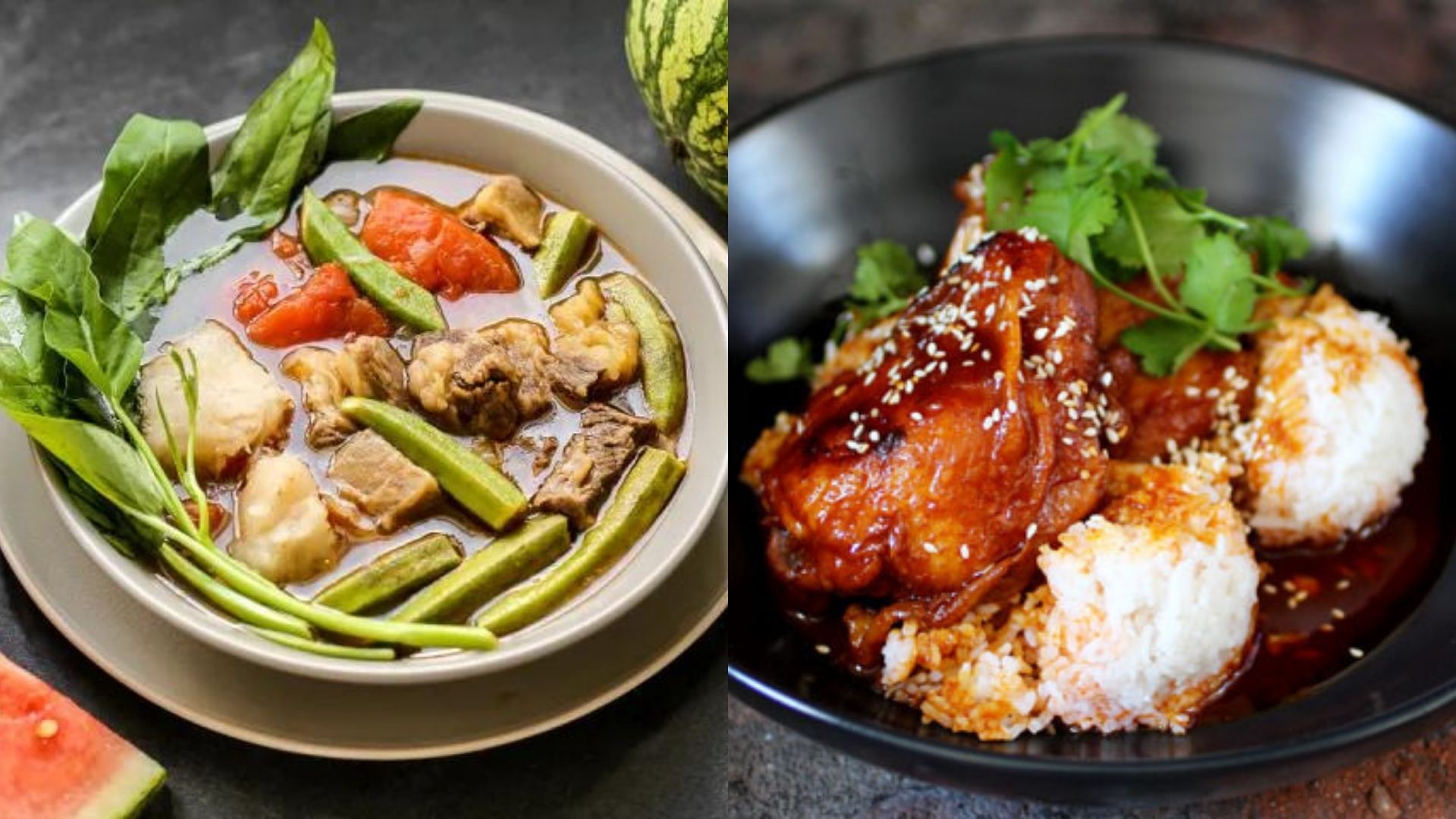With a centuries-long history of tradition and foreign colonization, Philippine cuisine is a testament to passed-down family recipes. The thought of making changes to it might feel intimidating to moms who hold on to traditional dishes that have been close to them since childhood. But the thing is, cooking is like art, and part of growing is being open to change.
Don’t worry—it doesn’t mean you are abandoning the old days. It’s all about giving them a fresh spin and adding wonder to your meals! If anything, experimentation is only helping to keep the culinary traditions alive.
That said, here are some recent modern twists on traditional Filipino dishes that turned out to be surprisingly delightful:
Korean-Style Adobo

Adobo is a classic Filipino dish of meat protein seared in oil and marinated in a sauce made from vinegar, peppercorns, bay leaves, and other spices. Between the bold stew flavor and the pungent sour smell is a filling meal for dinner, lunch, and even breakfast, satisfying in every bite.
For an exciting twist on this beloved recipe, why not try a K-twist? Add some popular Korean ingredients like Gochujang and Gochugaru! Together, these umami-packed additions will kick your adobo up a notch and bring an extra layer of fire. If you are a K-Drama-loving tita or you simply enjoy a tasty mix of Filipino and Korean flavors, this twist on Adobo might be what you’re looking for.
Baked Kaldereta

Kaldereta is a hearty Filipino stew of tender meat (often beef or goat) simmered in a rich tomato-based sauce along with potatoes, carrots, and bell peppers. It involves more time and ingredients to make compared to other stews, so it is usually served at get-togethers and celebrations where there are large crowds to anticipate.
Now, here’s a twist on the classic that will definitely make your taste buds water! This version keeps all the things Filipinos love about Kaldereta, except the rice. Instead, this combination pairs the Kaldereta meat sauce with cooked pasta, tops it with Bechamel sauce, and bakes them all together. The result is a delightful new texture with cheesy goodness that will completely alter the way you think about Kaldereta and baked pasta recipes.
Mechado Taco

Joining Kaldereta in the sea of Filipino tomato-based stews is Mechado. It is a dish of larded chunks of beef braised in a tangy tomato, citrus, and soy sauce.
The traditional flavors of Mechado might seem complex, but that’s part of what makes it so comforting for many people. Sometimes, a meal is so good that it becomes more than just dinner—it turns into a craving or, better yet, a snack. That’s what Filipinos have recently done with Mechado. When it comes to combining beef, tomatoes, onions, garlic, and spices, a taco shell will add a crunch that melts into a delicious treat.
Corned Beef Kare Kare

Kare Kare is similar to Kaldereta when it comes to hefty stews—both use similar cooking methods that lead up to that deep, satisfying flavor. The ingredients are where all the differences lie: Kaldereta is made with a savory tomato-based sauce in which beef or goat meat is simmered, while Kare Kare is known for its thick peanut-based sauce in which oxtail is simmered.
Cooking with oxtail can be taxing on both your clock and wallet. But that should not stop you from enjoying Kare Kare, especially when you can cut down on time and cost by replacing oxtail with corned beef! The change in the procedure is not a lot; just stir-fry the vegetables, sauté the onions and garlic, add the corned beef, and then the stew, and cook them together. This small change from oxtail to corned beef will save you valuable minutes and pesos, without leaving behind the very creamy flavor you enjoy in Kare Kare. With such an alternative, you can have as many plates of Kare Kare as you desire!
Watermelon Beef Sinigang

On the sour side of the broth family is Sinigang, a tamarind-flavored soup with vegetables and a protein that could be pork belly, beef ribs, fish, or shrimp. It’s hot and savory, perfect for when you are feeling blue or when the weather itself is gloomy. As such, it is an established well-loved comfort food among Filipinos.
Sinigang has gone through different versions where souring agents vary from tamarind to fruits such as mango, guava, and kamias. Lately, though, fruits are taking a new twist. Instead of adding sourness, they’re bringing sweet flavors to the table. Pineapples and strawberries are already on the list, but watermelon is the one everyone’s raving about for balancing the sour tamarind and hearty beef. This version gives Sinigang a refreshing new flavor and mouthfeel, making it a must-try for sweet and sour fans!
Much like art, food is ever-evolving and never reaches finality. Filipino cuisine is a persevering mix of local and international flavors that keeps reinventing itself. To moms, this only means that there’s always something new to find for you and your family, even in the most traditional dishes! Remember, the experiment is all part of the creativity and learning of cooking. Who knows, maybe making the slightest spin to your next meal might make it your new go-to comfort food!







